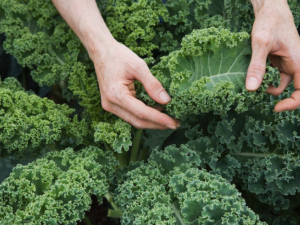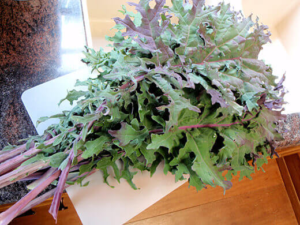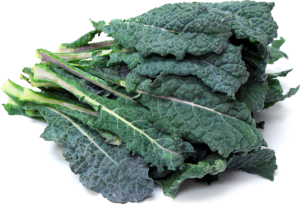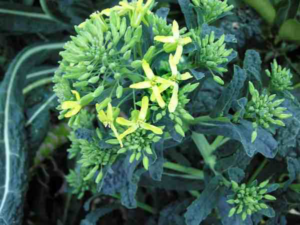“Kale is my best friend. I eat kale salad, I put kale in my smoothies, kale in my soup. I feel like Popeye...” Alanis Morissette, Author
Kale grows well in the colder winter months, making a good addition when other fruits and vegetables are less readily available. It is best to cook winter kale, as colder weather can turn the sugars in kale into starch, increasing the bitterness and fiber content.
Curly kale: This is the most commonly available type. It is usually bright green, dark green, or purple, with tight, ruffled leaves that are easy to tear. To remove the leaves from the fibrous stalk, run your hand down the stalk in the direction of growth.


Red Russian kale: This is a flat-leaf variety that looks a little like oak leaves. The stalks are slightly purple, and the leaves have a reddish tinge. People may find the stalks too fibrous to eat, but the leaves are sweet and delicate, with a hint of pepper and lemon, almost like sorrel. People can add them raw to salads, sandwiches, and juices, or as a garnish.


Lacinto Kale (also known as Italian Kale, Tuscan Kale or Dinosaur Kale) has dark blue-green leaves that are long and slender. Rather than having the curls and frills common in other kales, these are rumpled and puckered, and curled under along the entire margin. They’re best used in soups and stews.


Benefits and nutritional information:
- Kale is a nutrition superstar due to the amounts of vitamins A, K, B6 and C, calcium, potassium, copper and manganese it contains. One cup of raw kale has just 33 calories and only 7 grams of carbohydrate. So, it's a very diabetes- friendly/weight-friendly vegetable.
Starting
- Kale is planted from seeds, either sown directly into the garden or started indoors and transplanted into the garden.
- Soaking the seeds for no more than 24 hours prior to planting can significantly cut down on germination time and overall effort.
- Sow 3 to 4 seeds every 12 to 15 inches, 1/2” deep in rows 18 to 36 inches apart.
When to plant:
- Kale can be planted either in the spring, when the soil temperature reaches 45 degrees, or in the fall for winter harvest.
- Some sources recommend fall planting since kale leaves are sweeter when they mature in cooler weather.
- Plants started indoors need to be hardened off prior to planting in the garden.
- In our garden, kale has been able to survive and be productive throughout the winter with little or no protection as long as temperatures stay above single digits.
Thinning, training:
- Thin to one plant per group
Pests and pest controls:
- Aphids —either the light green or wooly, gray-green cabbage aphids —are the most common, and most persistent, pests. Since they generally start on the underside of leaves and go unnoticed until they’ve become well established, it’s important to monitor your kale frequently. Also, infestations often start in the curls and wrinkles of kale leaves, so taking a closer look while inspecting helps prevent aphids from becoming established.


- Cabbage worms: Those “pretty, little white and yellow butterflies” you see flitting around the garden are the adult stage of larvae that can end up eating holes in your kale (and other) leaves. You’ll probably notice the holes in the leaves first. The larvae themselves are small, greenish “worms.”
-
Cabbage loopers: The effect of cabbage loopers is quite similar to that of cabbage worms, and the treatment for them is the same. The cabbage looper adult is a gray, mottled moth instead of a white butterfly, and the larvae crawl along in a looping motion.
-
Flea beetles: If your leaves have a lot of small holes in them — looking like they were peppered by buckshot — you probably have an infestation of flea beetles.
Harvesting
- Kale is one of the great “cut-and-come-again” crops for a prolonged harvest.
- There isn’t a perfect time to pick kale. Smaller leaves will be more tender, but larger leaves yield more food.
- Of course, if you wait too long older leaves can become discolored and eventually fall off. Leaves that have started to discolor should be removed and discarded.
- As the kale plant matures, it may start to “bolt” — sending up flower stalks and preparing to set seeds. At this time, the leaves will become more bitter. On the other hand, the flower shoots are tender and very delicious.


